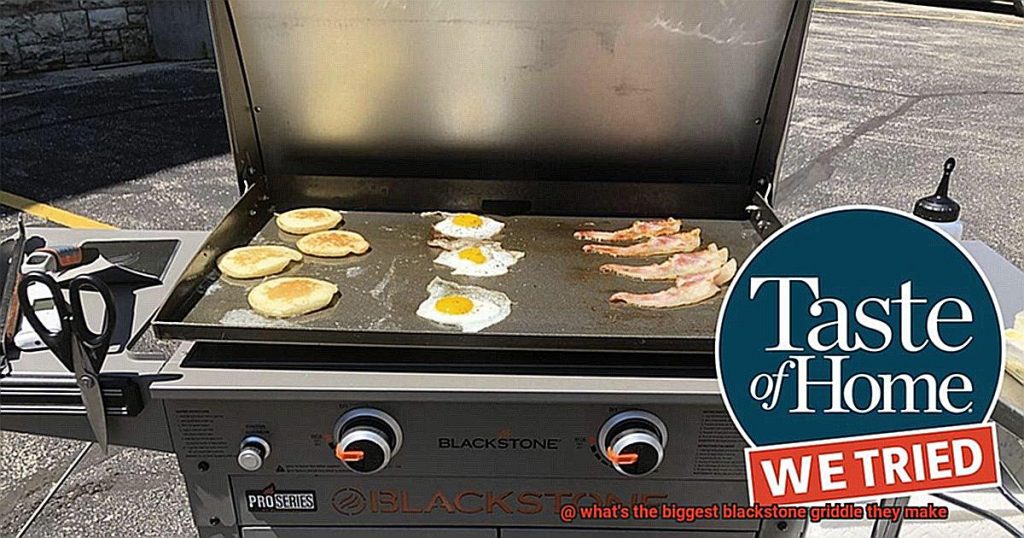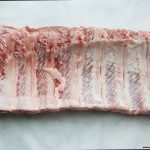Are you a meat lover? Do you crave the savory and succulent taste of ribs? If so, you may have noticed that there are different types of ribs on the menu. Among them, two of the most popular are ribs and spare ribs. But, do you know what sets them apart?
Most people would shrug and say they’re no different. However, that couldn’t be further from the truth. There is a significant difference between ribs and spare ribs – from their physical appearance to their taste.
In this article, we’ll take a deep dive into the world of meat and explore the differences between these two delicious cuts of pork. We’ll cover everything from where they come from on the pig’s body to how much meat is on each bone.
We’ll also divulge the secret to achieving that melt-in-your-mouth tenderness and savory flavor that makes your taste buds dance with delight. Whether you’re a barbecue enthusiast or just curious about meat, this article will make you a connoisseur of ribs.
So, sit back, grab your favorite beverage, and let’s get started on learning all about the difference between ribs and spare ribs.
Contents
What are Ribs?
Ribs are a mouth-watering dish that has become a staple in many households. But have you ever wondered what makes up this beloved cut of meat? Ribs come from the rib cage of animals like beef, pork, or lamb. They have a rich and juicy flavor with a lot of fat and connective tissue that melts down during cooking, resulting in tender and succulent meat.
There are two main types of ribs: baby back ribs and spare ribs. Baby back ribs, also known as loin back ribs, are taken from the top of the rib cage between the spine and the spare ribs. These ribs are shorter and curved than spare ribs, with less meat. The baby back rib is a leaner cut of meat that cooks faster, making it an ideal option for grilling. This cut of meat is perfect for those who prefer a leaner yet flavorful bite.
Spare ribs, on the other hand, are taken from the bottom of the rib cage, closer to the belly of the pig. They are longer and flatter than baby back ribs and have more meat. Spare ribs have more connective tissue and fat than baby back ribs, which makes them ideal for slow cooking methods like smoking or braising. Due to their high-fat content throughout the meat, they are juicier and more flavorful than baby back ribs.
It’s important to note that spare ribs come specifically from the belly area of a pig, while regular ribs come from the loin area. Spare ribs tend to have a stronger taste due to their higher fat content, while regular ribs are leaner making them a great option for those who prefer less fatty cuts of meat.
What are Spare Ribs?
Then you need to know about spare ribs.
Spare ribs are a delightfully meaty cut of pork that comes from the belly of the pig, situated below the back ribs. Unlike their leaner counterparts, spare ribs have more bone and fat, which makes them ideal for slow cooking methods like smoking or braising.
What makes these ribs so special is their higher fat content. While some may shy away from fat, it is what keeps these ribs moist and tender during the cooking process. The fat content also adds an extra layer of flavor to the meat, making it a favorite among barbecue enthusiasts.
Spare ribs can be prepared in a variety of ways. You can use a dry rub, marinade, or sauce before grilling, smoking, roasting, or even slow cooking them. However, the key to achieving maximum tenderness is to cook them low and slow.
When shopping for spare ribs, be sure to look for racks with plenty of meat on them and minimal excess fat. Trimming any excess fat before cooking will prevent flare-ups on the grill or smoker.
Difference in Taste and Texture
As an expert on this subject, let me guide you through the various factors that contribute to these differences.
Firstly, ribs are more tender and meatier than spare ribs with a higher fat content that gives them a rich, juicy flavor. Spare ribs, on the other hand, are leaner and have less meat, which results in a chewier texture and slightly less intense flavor. However, some people prefer this firmer texture and milder taste.
The location on the pig where the ribs come from is one of the primary factors that contribute to these differences. Ribs come from the upper portion of the ribcage closer to the back of the animal, known for its tender meat and high levels of marbling. This marbling also gives ribs their signature juiciness and rich flavor.
Spare ribs, on the other hand, come from the lower portion of the ribcage closer to the belly. This area tends to be leaner and less marbled than the upper portion of the ribcage, resulting in their firmer texture and milder flavor.
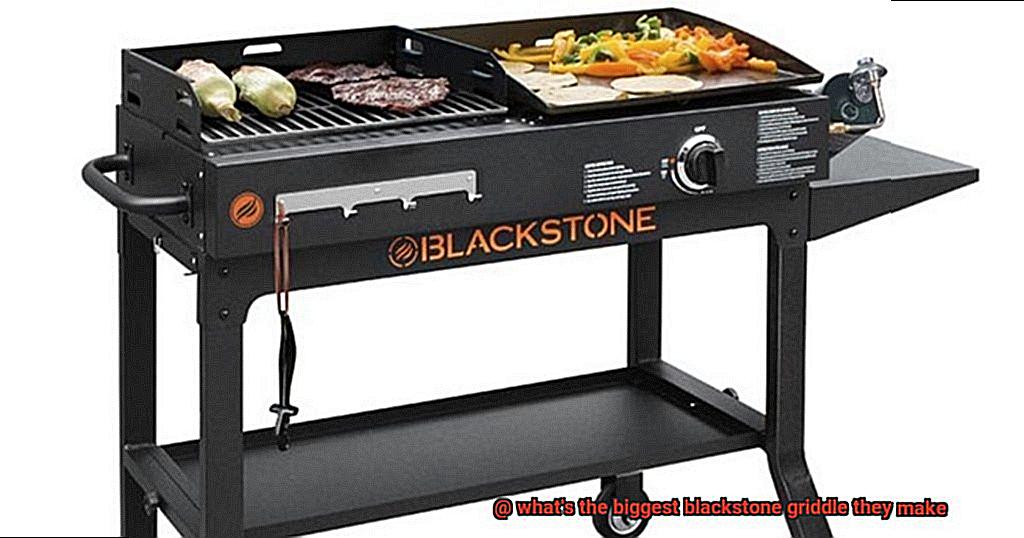
However, it’s not just about where the ribs come from on the pig – how they are prepared can also affect their taste and texture. Both types of ribs can be cooked in various ways, including grilling, smoking, roasting or braising. Each method can affect the flavor and texture of the meat differently, so it’s important to experiment with different techniques to find your preferred preparation method.
Difference in Location on the Animal
Join me as we explore the world of meat and uncover the secrets of these delicious cuts.
First and foremost, the location on the animal is the primary difference between ribs and spare ribs. Ribs are taken from the back of the animal, specifically the rib cage, while spare ribs come from a lower part of the same area. This means that spare ribs are meatier and have more fat than traditional ribs.
Let’s delve deeper into this subject. Ribs extend from the spine to the sternum, while spare ribs are located below the ribs and closer to the belly of the animal. Spare ribs have longer, flatter bones, which make them perfect for grilling or smoking. In contrast, traditional ribs are shorter, curved, and have less meat than spare ribs.
Now, let’s talk about cooking methods. Due to their higher fat content, spare ribs require a low and slow cooking method to allow the fat to render and the meat to become tender. They’re often cooked using a grill or smoker with indirect heat. On the other hand, traditional ribs can be cooked using various methods such as grilling, baking, or broiling.
It’s essential to understand these differences in location on the animal when selecting your cut of meat. To assist you in making an informed decision, here’s a list of key takeaways:
- Spare ribs are located in a lower part of the rib cage and have more fat and meat than traditional ribs.
- Traditional ribs are shorter, curved, and have less meat than spare ribs.
- Spare ribs have longer, flatter bones that make them ideal for grilling or smoking.
- Due to their higher fat content, spare ribs require low and slow cooking methods.
- Traditional ribs can be cooked using various methods such as grilling, baking, or broiling.
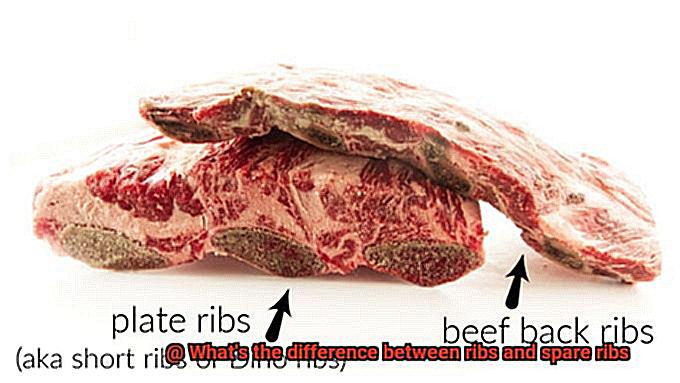
Difference in Fat Content
Get ready to savor the flavor as we explore the differences in fat content between ribs and spare ribs. As an expert guide in the world of meat, let me take you on a journey into the juicy world of these two popular cuts.
Ribs, taken from closer to the spine, are known for being leaner and containing less fatty tissue. Spare ribs, on the other hand, are taken from closer to the belly and contain more fat marbling throughout the meat. This extra fat can make spare ribs more flavorful but also more fatty overall.
But don’t let that scare you away from spare ribs. They’re a favorite among BBQ enthusiasts for their tenderness and juiciness. In fact, longer cooking times can help render the fat and create a mouth-watering end result.
When it comes to preparing either type of rib, it’s vital to consider the fat content and adjust your cooking method accordingly. For leaner ribs, try using a dry rub or marinade to add flavor and moisture. On the other hand, fattier spare ribs may benefit from a slower cooking method to allow the fat to render and create a tender, juicy end result.
Cooking Methods for Both Types of Ribs
Rib lovers, rejoice. There are several different cooking methods that can be used to create mouth-watering ribs and spare ribs. From grilling to smoking to baking, each method offers a unique flavor profile that is sure to delight your taste buds.
Grilling
Grilling is a popular method for cooking ribs because it imparts a smoky flavor and a crispy exterior. To grill ribs, start by seasoning them with your favorite dry rub or marinade. Then, preheat your grill to medium-low heat and place the ribs on the grates. Cook for approximately 10-12 minutes per side, flipping occasionally, until the meat is cooked through and tender. This method is perfect for those who prefer a charred and slightly crunchy texture.
Smoking
Smoking is another popular method for cooking ribs, particularly spare ribs. This slow-cooking method involves cooking the meat over low heat for several hours, allowing the fat and connective tissue to break down and create a tender, juicy texture. To smoke ribs, first season them with a dry rub or marinade and let them sit in the fridge for a few hours to absorb the flavors. Then, set up your smoker according to the manufacturer’s instructions and place the ribs in the smoker. Cook for approximately 4-6 hours at 225°F until the meat is fully cooked and tender. The result is a melt-in-your-mouth texture with a rich smoky flavor.
Baking
Baking is a less traditional method for cooking ribs, but it can be a convenient option if you don’t have access to a grill or smoker. To bake ribs, start by seasoning them with your desired spices and placing them in a baking dish. Cover tightly with foil and bake at 300°F for approximately 2-3 hours until the meat is fully cooked and tender. For crispier ribs, remove the foil during the last 30 minutes of baking and brush with BBQ sauce. This method is perfect for those who prefer a fall-off-the-bone texture.
It’s important to keep in mind that there are some differences between regular ribs and spare ribs. Spare ribs tend to have more fat and connective tissue than regular ribs, which means they require a longer cooking time to become tender. However, both types of ribs can be cooked using similar methods.
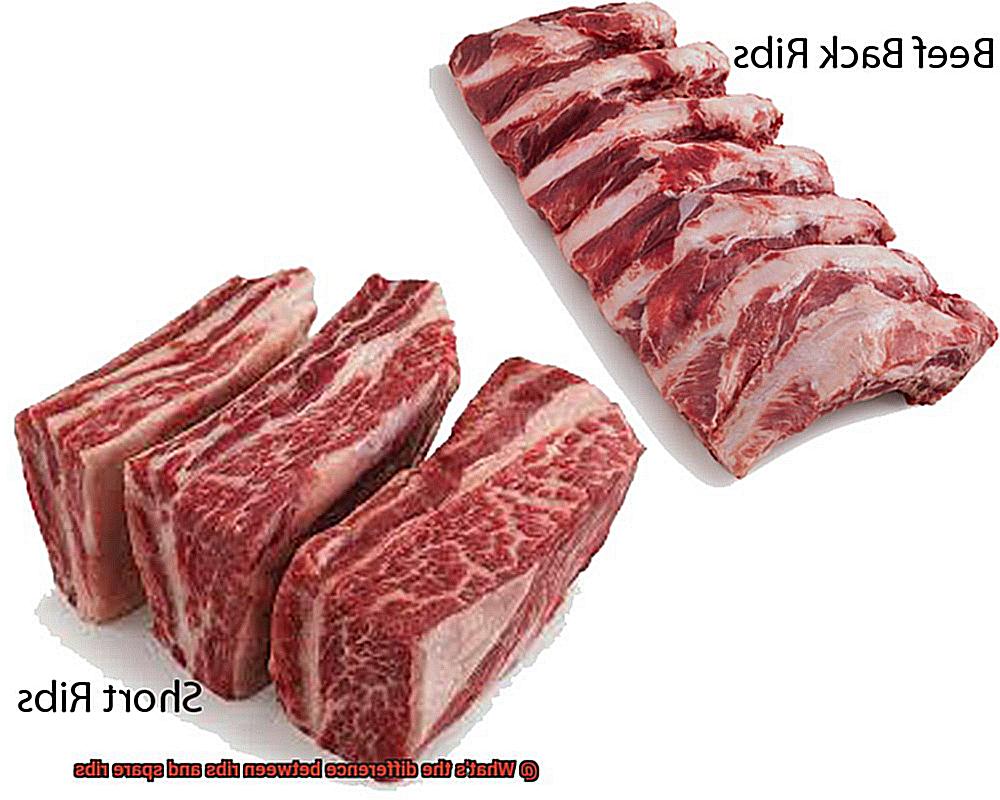
Grilling regular ribs
Regular ribs are leaner than spare ribs, making them a great option for those who prefer less fatty cuts of meat. To grill regular ribs, follow the same steps as grilling spare ribs, but reduce the cooking time to about 30-40 minutes. This will ensure that the meat stays tender and juicy without becoming overcooked.
Smoking regular ribs
Smoking regular ribs requires the same method as smoking spare ribs. However, due to their leaner nature, regular ribs may require less time in the smoker. Check them intermittently to ensure they do not dry out or become tough.
Benefits of Regular (Baby Back) Ribs
Regular or baby back ribs are a favorite among grill enthusiasts and barbecue lovers alike, and for good reason. As an expert in this topic, let me share with you the amazing benefits that these ribs offer.
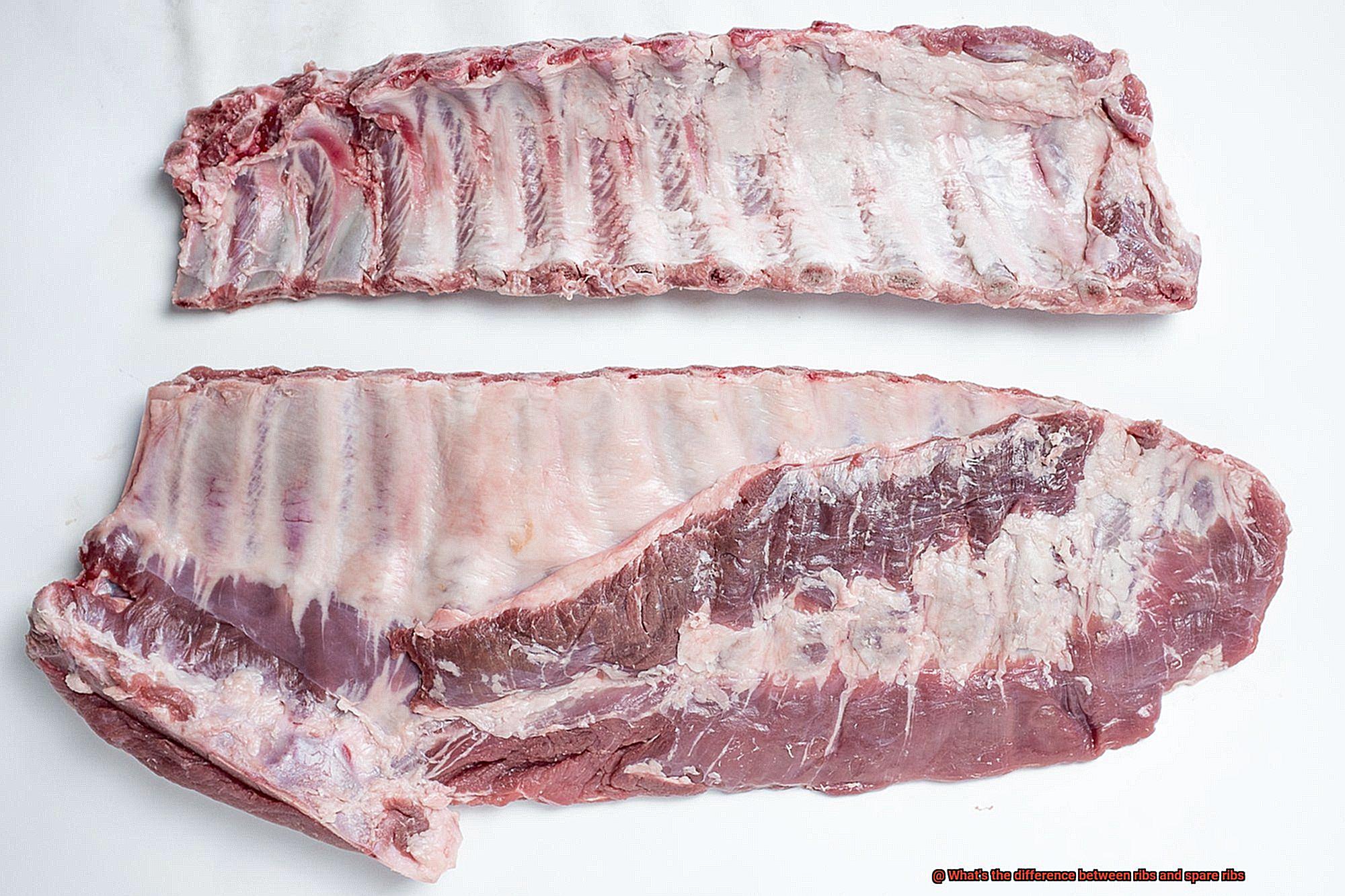
Firstly, let’s talk about tenderness. Regular or baby back ribs are known for their tender, juicy meat that practically melts in your mouth. This is because they have less connective tissue compared to other pork rib cuts, making them easier to chew and enjoy. So, if you prefer your meat to be soft and juicy, these ribs are the perfect choice for you.
Now, let’s talk about flavor. Regular or baby back ribs are meatier than other pork rib cuts, which means they can hold more sauce and seasoning. This allows them to absorb the flavors more effectively, resulting in a rich and flavorful taste that will leave you wanting more. Whether you like them sweet or spicy, these ribs can satisfy any meat lover’s cravings.
But wait, there’s more. Regular or baby back ribs are also a healthier option for those who are conscious about their diet. They have less fat than other pork rib cuts, making them a leaner choice. Additionally, they are high in protein which is essential for building and repairing muscles. So not only do they taste good, but they’re also good for your body.
Benefits of Spare Ribs
When it comes to ribs, spare ribs are the ultimate choice. These meaty and flavorful cuts are packed with benefits that will make any BBQ lover’s mouth water.
First and foremost, spare ribs are known for their rich and savory taste. The marbling of fat throughout the meat gives it a depth of flavor that is unmatched by other cuts of pork. Whether you prefer them slow-cooked with a sweet and tangy BBQ sauce or rubbed with a spicy blend of seasonings, spare ribs can be customized to suit any taste preference.
But that’s not all – spare ribs offer a range of health benefits too. They’re an excellent source of protein and essential nutrients like zinc and vitamin B12, making them a tasty way to boost your diet’s nutritional value. Plus, the fat content in spare ribs helps keep the meat moist during cooking, resulting in tender and juicy meat that falls off the bone.
Spare ribs are also incredibly versatile when it comes to cooking methods. You can grill them over high heat for a smoky and charred flavor, smoke them low and slow for a melt-in-your-mouth texture, roast them in the oven for a crispy crust, or braise them for a tender and succulent finish. With so many options to choose from, you can enjoy spare ribs in countless ways.
LgDrjAyOzK8″ >
Conclusion
In summary, the difference between ribs and spare ribs lies in their location on the pig’s ribcage. Ribs are taken from the upper portion of the ribcage, while spare ribs come from a lower part closer to the belly. The extra fat and connective tissue in spare ribs give them a richer flavor, but also require longer cooking times to achieve tenderness.
Regular or baby back ribs are renowned for their tender meat that practically dissolves in your mouth. With less connective tissue than other pork rib cuts, they’re easier to chew and enjoy. In contrast, spare ribs boast a meatier texture with an unrivaled depth of flavor due to their marbling of fat throughout the meat.
Both types of ribs offer unique benefits that make them perfect for any BBQ lover’s cravings. Regular or baby back ribs are leaner and high in protein, making them a healthier option for those watching their diet. Meanwhile, spare ribs provide essential nutrients like zinc and vitamin B12 while keeping the meat moist during cooking.
Whether you prefer regular or spare ribs, both cuts can be cooked using similar methods such as grilling, smoking, or baking.

